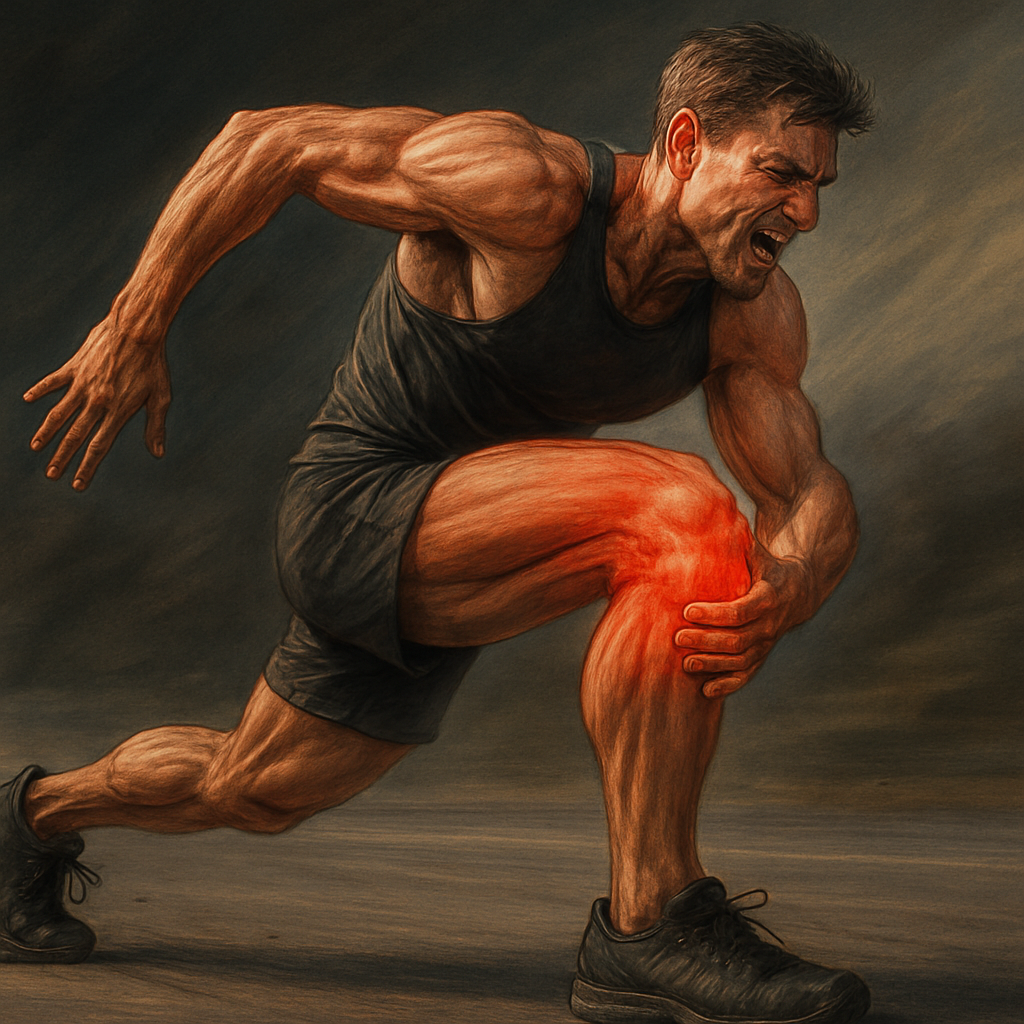
🦵Knee & Ankle Pain – A Clearer Guide
🚧 Common Issues We Treat
- Chronic Knee Pain
- Tendonitis / Tendinopathy
- Bursitis or Fat Pad Syndrome
- Post Ankle Sprains
🔍 How These Injuries Happen
🛠️ Common Work Movements That May Contribute:
- Repeated squatting or kneeling (e.g. tilers, plumbers)
- Sudden twisting motions (e.g. jumping off vehicles)
- Carrying heavy tools or materials up ladders
- Working on uneven terrain or rooftops
🧠 Understanding the Pain Mechanism
Pain in the knee or ankle can stem from:
- Muscle tightness pulling the joint out of alignment
- Poor biomechanics due to weakness or overuse
- Inflammation of tendons, bursae, or joint capsule
- Degeneration of cartilage or meniscus
📚 Supporting Research
✅ 1. Powers CM (2010)
Title: Patellofemoral joint stress during weight-bearing and non-weight-bearing quadriceps exercises
Author: Christopher M. PowersJournal: Journal of Orthopaedic & Sports Physical Therapy (JOSPT)
Published: February 2010; Volume 40, Issue 2, Pages E1–E8
PubMed Link: https://pubmed.ncbi.nlm.nih.gov/20118526/📌 Summary:
This study analyzes the stress imposed on the patellofemoral joint during both weight-bearing and non-weight-bearing exercises. It emphasizes how exercise form and muscular control—especially of the quadriceps—significantly affect joint load and stress distribution. Proper exercise prescription can mitigate knee stress and reduce injury risk.
✅ 2. Chang A. et al. (corrected to PMC3653642)
Title: Association of muscle strength and function with progression of knee osteoarthritis
Author: Chang AH, Moisio KC, Chmiel JS, et al.
PubMed Link: https://www.ncbi.nlm.nih.gov/pmc/articles/PMC3653642/📌 Summary:
This longitudinal study explores the role of lower limb muscle strength in the progression of knee osteoarthritis. Results showed that reduced quadriceps strength and impaired function are linked to worsening joint degeneration over time. It highlights the importance of maintaining muscular balance and strength to protect knee integrity.
✅ 3. Felson DT et al. (2000)
Title: Osteoarthritis: new insights. Part 1: the disease and its risk factors
Author: Felson DT, Lawrence RC, Dieppe PA, et al.
PubMed Link: https://pubmed.ncbi.nlm.nih.gov/11033593/📌 Summary:
This comprehensive review outlines the pathogenesis of osteoarthritis (OA), emphasizing mechanical risk factors such as muscle weakness, joint instability, malalignment, and abnormal load distribution. It serves as a foundational reference for understanding how biomechanical dysfunction contributes to OA progression, particularly in the knee and hip.
✅ Our Treatment Approach
👐 Myotherapy & Soft Tissue Techniques:
- Deep tissue release around quads, hamstrings, calves
- ITB & patella tracking correction
- Joint mobilisation & movement retraining
🧰 Corrective Exercise Plans:
- Glute activation & hip control drills
- Hamstring / calf flexibility
- Ankle stability & knee control training
🎯 What You’ll Get with Us
- ✅ Assessment tailored to tradie-specific movement patterns
- ✅ Real treatment (not just passive advice)
- ✅ Plan for strength, recovery & reloading
📌 When to Book a Session
Call us if you experience:
- Ongoing knee pain that worsens with stairs or kneeling
- Sudden pain after twisting or impact
- Weakness or instability when walking or climbing
- Tightness feeling
📞 Book Today
👉 Make a booking online or call text us at 0466 969 860
Let’s get you back on the tools – stronger, safer, and pain-free.